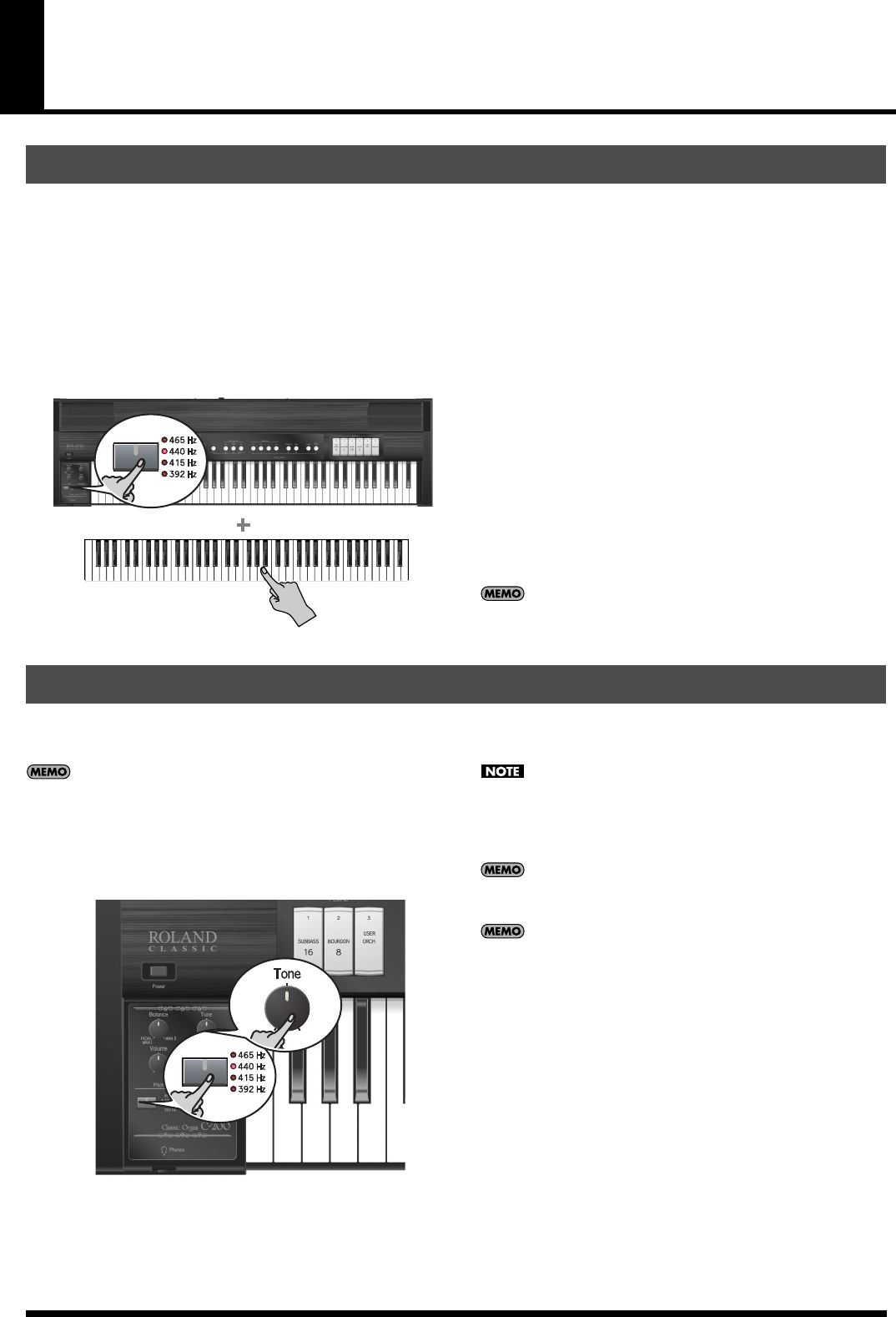
27
Additional Convenient Functionality
<Advanced Operation>
You can transpose your playing without changing the position at which you play the keys. For example, if you’re playing a song
in a difficult key signature that contains numerous sharps (#) or flats (b), you can transpose the pitch of the keyboard and play
the piece in an easier key.
1. Press and hold the [Pitch] button until the indicator on
the button starts flashing in green.
2. While holding down the [Pitch] button, play the tonic
note of the key to which you want to transpose the
keyboard.
3. Release the [Pitch] button.
If this is set to any key other than C, the [Pitch] button
will light green.
For example, if you want the Eb pitch to sound when you
play the C key, hold down the [Pitch] button and press
the Eb key.
4. To return the keyboard to its normal state, hold down
the [Pitch] button and press a C key.
The [Pitch] button goes dark to indicate that the key-
board is no longer transposed.
* You can transpose the keyboard in a range of five semitones
upward (F) or six semitones downward (F#) relative to C.
* You can specify the transpose setting by pressing a key of any
octave.
Immediately after you turn on the power, the key
transpose setting will be in the normal state.
If you’re playing the C-200 together with other instruments in an ensemble, you can adjust the pitch of the C-200 to match the
other instruments if necessary.
•When you turn on the power, the tuning is set to
A= 440Hz (for the A above middle C).
◆ While holding down the [Pitch] button, turn the [Tone]
knob.
Turn the knob clockwise to raise the overall pitch, or
counterclockwise to lower it.
Do not press and hold the [Pitch] button for too long to
avoid activating Transpose mode. (Otherwise, press a C
key on the keyboard to leave Transpose mode and repeat
this step.)
Immediately after you turn on the power, the tuning will
be in the normal state (A= 440Hz).
• The center position of the knob corresponds to the
following:
• 465Hz if the “465Hz” indicator lights (Venetian pitch)
• 440Hz if the “440Hz” indicator lights (Normal pitch)
• 415Hz if the “415Hz” indicator lights (Baroque pitch)
• 392Hz if the “392Hz” indicator lights (Versailles pitch).
Changing the pitch of the keyboard (Transpose)
C4
Matching the pitch of another instrument (Tuning)
C-200_e.book Page 27 Monday, April 4, 2011 5:22 PM


















